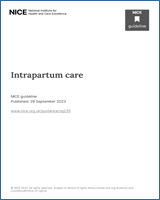| Request for epidural analgesia | About 194 per 1,000 women would be expected to request epidural analgesia (so 806 would not) | About 407 per 1,000 women would be expected to request epidural analgesia (so 593 would not) | About 213 per 1,000 fewer women would be expected to request epidural analgesia with intravenous remifentanil PCA, so for 787 there would be no difference |
| Spontaneous vaginal birth | About 647 per 1,000 women would be expected to have a spontaneous vaginal birth (so 353 would not) | About 536 per 1,000 women would be expected to have a spontaneous vaginal birth (so 464 would not) | About 111 per 1,000 more women would be expected to have a spontaneous vaginal birth with intravenous remifentanil PCA, so for 889 there would be no difference |
| Birth with forceps or ventouse | About 145 per 1,000 women would be expected to have a birth with forceps or ventouse (so 856 would not) | About 245 per 1,000 women would be expected to have a birth with forceps or ventouse (so 756 would not) | About 100 per 1,000 fewer women would be expected to have a birth with forceps or ventouse with intravenous remifentanil PCA, so for 900 there would be no difference |
| Requirement for supplemental oxygen | About 461 per 1,000 women would be expected to need supplemental oxygen (so 539 would not) | About 13 women per 1,000 women would be expected to need supplemental oxygen (so 987 would not) | About 448 per 1,000 more women would be expected to need supplemental oxygen with intravenous remifentanil PCA, so for 552 there would be no difference |
| Maternal reduced oxygen saturation (less than 94% SpO2) | About 138 per 1,000 women would be expected to have reduced oxygen saturation (so 862 would not) | About 52 per 1,000 women would be expected to have reduced oxygen saturation (so 948 would not) | About 86 per 1,000 more women would be expected to have reduced oxygen saturation with intravenous remifentanil PCA, so for 914, there would be no difference |
